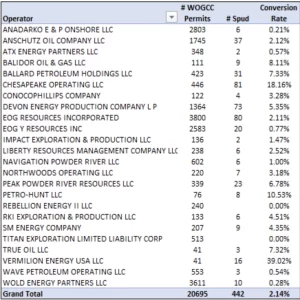If you’re confused by this term, you’re not alone. The industry currently has two ways of defining and calculating net royalty acres, which we like to call the “old” way and the “modern” way.
Old Way:
The old way was first defined in the 1950s when a ⅛ royalty was the standard rate. To clear up confusion surrounding some royalty assignments that occurred in the 1940s, a Mississippi court came to the conclusion that 1 NMA = 1 NRA leased at ⅛. Because ⅛ is no longer the going lease rate, the industry has had to adapt this definition in order to “normalize” a higher royalty back to what it would translate into at ⅛.
NRA Normalized to ⅛ Example:
You have 100 NMA leased at 18.75%, and an offer to purchase for $100,000
(100 NMA * 8) * 18.75% royalty = 150 NRA to 1/8
Price per NRA = $100,000/150 NRA to 1/8 = $666
Because ⅛ is no longer a “normal” lease rate, the formula used above can cause confusion and miscommunication, inflating numbers so that your net royalty acres actually appear higher than the number of net mineral acres you own.
Modern Way:
The modern way of calculating NRA (sometimes called NRA to 100%) is actually the first step in getting to your wellbore interest, which is your share of actual production from a given well. Calculating NRA to 100% allows for a better understanding of the value your minerals as they are extracted.
Modern Example:
If you had 100 NMA leased at 18.75%, and an offer to purchase for $100,000
100 NMA * 18.75% royalty = 18.75 NRA
Price per NRA = $100,000/18.75 NRA = $5,333
>>If you want to take it a step further and calculate your interest in a wellbore, just divide this NRA by the drill spacing unit (“DSU”). Example: 18.75 NRA/1280 DSU = .015 wellbore interest.
If your minerals are currently unleased, calculate your NRA using the royalty rate you could lease your minerals for on the open market, which often varies from basin to basin.

